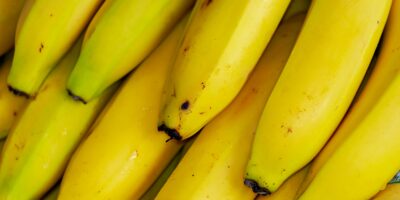Welcome back, my friends, to the tree of forbidden knowledge. The tree of knowledge is a funny thing. The modern conception of the forbidden fruit is an apple, no doubt associated as much with the story of Snow White as with Eve and her gullible husband. Biblical scholarship, on the other hand, suggests that the fruit was actually a pomegranate. This, as many of you are probably aware, is celebrated by the POETS Manager at EngSoc, who has cleverly made an anagram of the word “pomegranates” into a job title. Now, however, you know the truth; look around you. What do you see? It’s obvious once you’re here, isn’t it? Relax and feel at ease, companions: you will suffer no harm under the tomato tree.
With me I bring the astounding findings of Yilmaz et al.: “Steady and dynamic oscillatory shear rheological properties of ketchup–processed cheese mixtures: Effect of temperature and concentration.” Fascinating work this team has done, combining the forbidden fruit of tomato with the ambrosia of processed cheese. Such a curious combination it is: milk, the refined and solidified life-giving liquid, combined with the poisonous fruit of the nightshade. Perhaps the dichotomy is a panacea of sorts; the mixing of the hateful liquid and beautiful paste is surely enough to make the dead spin in their graves. Perhaps with optimization of the concoction, it will raise them.
Alas, this research, as with so many others, is woefully (or perhaps, maliciously) misunderstood by the established journal editors. Instead of taking the honour of first article in a world-renowned medical journal, the paper is relegated to the comparable abyss of the Journal of Food Engineering.
Despite the miscategorization, this article is still filled with useful information for amateur and professional alchemists alike. For instance, Yilmaz gives the most precise definition of ketchup I have ever seen: “[A] time-independent semi-solid non-Newtonian fluid having a definite yield stress.” The young chemist should note, at this point, that Yilmaz takes to bold move in this paper of rejecting the current compromise solution in the catsup/katsup/ketchup debate; eschewing the modern tendency to alternate the three spellings, he stands firm to his true and righteous conviction that ketchup is the proper word.
Now, I suppose, I should describe the purpose of the paper in some greater detail. It describes the methodology by which ketchup can be fortified by “dairy proteins like processed cheese to obtain a nutritionally enriched product.” It goes in great detail into the chemical processes (others might say recipes, but have you ever seen a recipe that involved a flow chart?) that are involved in the creation of both ketchup and processed cheese. The combination, ketchup-processed cheese (more frequently known as K–PC) is subjected to a battery of tests. Indeed, it is a more comprehensive study of a material than any I have ever seen. Shear rates, pH, colour, and frequency response. The tests are expanded to study the effects of both temperature and processed cheese-content. Even the taste, texture, and odour were assessed by panelists who were specially prepared in “training sessions”. I have never seen steel, the supposed fundamental engineering material, be assessed for taste and texture. Yet here is K–PC, a product that has never even been made in an industrial setting, with an assessment of what level of cheese is acceptable (15%, if you’re curious).
Perhaps more significant than any other advancement made by this paper, however, is the successful use of a 3D surface chart that incorporates perspective into its design. The unimaginative call it confusing and disorientating, but they lack, as I just stated, imagination. This non-orthogonal viewpoint (in other words, realistic) allows one to feel like they are really there, sitting on the surface as it gently slopes under the changing temperatures and pressures. For that alone, this paper is worth reporting.
Well, dawn is upon us, so we should scurry from our tree before the homeowners call the police. Remember this article the next time you find yourself wandering through a grocery store; if you see a ketchup with extra calcium in it, buy it all up. It’s not everyday that you get to own a piece of suppressed science.




Leave a Reply